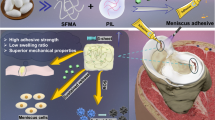Abstract
THE presence of ascorbic acid in vitreous humour1 is of great importance in the process of post-mortem degradation, since hyaluronic acid, the major polysaccharide component of vitreous humour2, has been shown3 to be degraded by reducing agents such as ascorbic acid and hydroquinone, in the presence of oxygen (the so-called ORD—oxidative reductive depolymerization—reaction). It is generally held that this depolymerization is brought about by free radical action, since radical scavengers such as sodium diethyldithiocarbamate have been shown4 to inhibit the reaction, and in an analogous investigation of the degradation of alginate, Smidsrod, Haug and Larsen5 have postulated a free radical reaction with peroxide intermediates. In our examination of the preservation of human vitreous humour a major consideration has been the effects of external agents, such as antibiotic preservatives and their ability to participate in an ORD reaction, together with methods of preventing such degradation.
This is a preview of subscription content, access via your institution
Access options
Subscribe to this journal
Receive 51 print issues and online access
$199.00 per year
only $3.90 per issue
Buy this article
- Purchase on Springer Link
- Instant access to full article PDF
Prices may be subject to local taxes which are calculated during checkout
Similar content being viewed by others
References
Barany, E. H., and Woodkin, A. M., Acta Physiol. Scand., 33, 257 (1955). Heath, H., Exp. Eye Res., 1, 362 (1962).
Meyer, K., and Palmer, J. W., J. Biol. Chem., 107, 629 (1934).
Pigman, W., and Rizvi, S., Biochem. Biophys. Res. Comm., 1, 39 (1959).
Pigman, W., Rizvi, S., and Holley, H., Biochim. Biophys. Acta, 53, 254 (1961).
Smidsrod, O., Haug, A., and Larsen, B., Acta Chem. Scand., 17, 2628 (1963).
Jacob, S. W., Bischel, M., and Herschler, R. J., Curr. Ther. Res., 6, 134 (1964).
Mueller, F. O., Casey, T. A., and Trevor-Roper, P. D., Brit. Med. J., 2, 473 (1964). Smith, A. U., Ashwood-Smith, M. J., and Young, M. R., Exp. Eye Res., 2, 71 (1963).
Author information
Authors and Affiliations
Rights and permissions
About this article
Cite this article
BARKER, S., CREWS, S., MARSTERS, J. et al. Inhibition of Hyaluronic Acid Degradation by Dimethyl Sulphoxide. Nature 207, 1388–1389 (1965). https://doi.org/10.1038/2071388b0
Published:
Issue Date:
DOI: https://doi.org/10.1038/2071388b0
This article is cited by
-
Stoffwechsel und Wirkung des Dimethylsulfoxids
Die Naturwissenschaften (1968)
-
Viscosity changes of synovia after application of water treated with ultrasound
Experientia (1968)
Comments
By submitting a comment you agree to abide by our Terms and Community Guidelines. If you find something abusive or that does not comply with our terms or guidelines please flag it as inappropriate.



